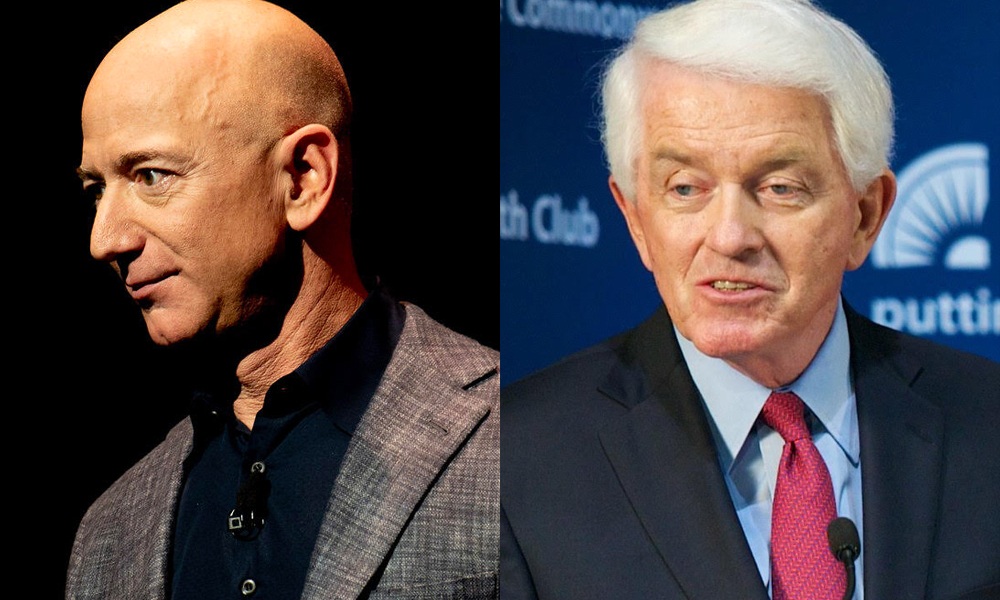
When a Larger-Than-Life Leader Steps Back, What Comes Next?
Announcements that two iconic business leaders would be leaving their roles highlight the challenges of maintaining culture amid leadership transitions. Here’s how associations in the same boat can find their path forward.
In recent weeks, two high-profile figures announced their plans to step down from their CEO roles. Both were legends in their respective fields.
One, departing Amazon CEO Jeff Bezos, is credited with bringing e-commerce to the masses and building a business around cloud computing, making both bedrocks of the American economy. (He’ll be transitioning into an executive chairman role in July, with Andy Jassy taking his place.) The other, longtime U.S. Chamber of Commerce CEO Tom Donohue, modernized that organization’s role as the voice of American businesses over the past quarter century. (Donohue, 83, will be retiring in March, with Suzanne Clark, the Chamber’s current president, taking his place.)
These figures were titans at their organizations, and many associations have a similar figurehead at the top. Yet associations may not be prepared for their leader’s departure, says Gary LaBranche, FASAE, CAE, president and CEO of the National Investor Relations Institute.
More than half of all association CEOs are eligible for retirement, according to LaBranche. And 8 to 10 percent of association CEOs transition out each year—which means that most associations will see a change of CEO over the next decade.
Despite this, succession planning often falls to the wayside, as it can be a difficult issue to raise.
“The reality is that it’s hard for boards, and certainly for CEOs, to talk about it,” LaBranche says.
LaBranche, who went through this process with his own association and later used it as the basis for his book The Association CEO Succession Toolkit, notes that while the CEO can have a say in succession, the decision is ultimately up to the board.
“There is no more defined or significant or clear role of the board than the continuity of the enterprise,” LaBranche says. “And the continuity of the enterprise is personified in the transition of the CEO.”
LaBranche says that it’s relatively rare for CEOs to play an active role in a transition, but there are exceptions, especially when a leader has reached an iconic status within the organization—as Bezos and Donohue have. “If the culture of the organization is such that the CEO is really seen as the leader of the organization, then that might be the case,” he says.
In the case of a culture-setter like Bezos or Donohue, it’s likely that the culture their leadership created will stick—but the organization won’t stay static after a transition. LaBranche cites the case of Bill Gates, who left the CEO position of Microsoft in 2000 and later entirely departed from the company he founded. The company faced long-term transitional challenges but recovered in recent years with a fresh approach.
“Circumstances combine to determine the extent and the speed at which culture will change, but inevitably, the culture will change,” LaBranche says. “The Microsoft that Bill Gates left from is not the Microsoft of today.”
However associations transition, they’ll do it better with a plan. Here are some approaches worth considering:
Field-test potential successors before putting them in charge. This strategy has proven successful for a number of associations that have been in the position to plan for succession. In the case of the U.S. Chamber of Commerce, LaBranche notes that the organization took a methodical approach in bolstering Clark’s position as a successor to Donohue in recent years. “Over the past two years, Suzanne met with key stakeholders, developed relationships on the Hill, built a staff team, met and overcame challenges, and started leading the Chamber in inspiring new directions,” he says. “It is easy to see why Tom and the Chamber Board have every confidence in her.”
Expand your search outside of the organization. While field-testing an internal player for succession may be ideal, many associations are simply not large enough to allow for that kind of strategy, LaBranche says. “Most associations don’t have the luxury of a deep bench. Most associations have 25 staff or fewer; there are a handful of senior staff,” he says. In these cases, it would be useful to use an executive search firm, which can help identify potential replacements. According to LaBranche, around 60 percent of associations do this when transitioning.
Departing CEOs Jeff Bezos of Amazon, left, and Tom Donohue of the U.S. Chamber of Commerce. (Daniel Oberhaus/Flickr; Wikimedia Commons)






Comments